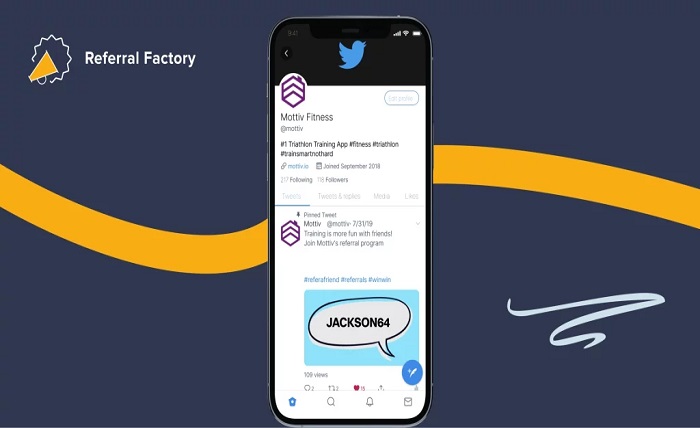Referral codes are a powerful tool used by companies to attract new customers through the recommendations of existing ones. These codes not only benefit the company by expanding their customer base but also reward users who share and utilize them. This mutual benefit creates a win-win situation, promoting an ongoing cycle of rewards and incentives. In this post, we will explore various aspects of referral codes, including how they work, how to maximize their benefits, and the strategies for effectively managing them.
What is a Referral Code?
A referral code is a unique string of letters and numbers provided by a company to its customers. These customers can then share these codes with friends and family, encouraging them to sign up for a service or purchase a product. When these new customers use a referral code, both they and the person who shared the code typically receive a reward, such as a discount, bonus, or other incentives.
Benefits of Using Referral Codes
Using referral codes can be incredibly beneficial. For new customers, it often means receiving a first-time purchase discount or additional perks. For the referrers, the benefits can be cumulative, increasing with the number of people they successfully refer. This can lead to substantial savings or rewards, making referral codes an attractive aspect of customer loyalty programs.
How to Find and Share Referral Codes
Finding and sharing referral codes is straightforward. Most companies provide a referral option in their account settings or dashboard. Users can typically copy the code directly or share it via email, social media, or direct link. Sharing these codes among a network of friends or through social media platforms can significantly increase the benefits as more people use the code.
The Impact of Referral Codes on Businesses
For businesses, referral codes are a cost-effective marketing tool. They rely on word-of-mouth advertising, which is not only cheaper but often more effective than traditional advertising channels. Referral programs can significantly enhance customer acquisition rates and improve customer loyalty, as existing customers feel valued for their contributions.
Creative Ways to Use Referral Codes
Beyond simply sharing codes with friends and family, creative methods can amplify your benefits. This includes sharing your referral code on blogs, social media platforms, or even YouTube videos, especially if you have a considerable following. Additionally, participating in forums and community groups related to shopping or deals can be effective.
Managing Your Referral Codes
To effectively manage your referral codes, keep track of them in an organized manner. Use spreadsheets or dedicated apps to note down the codes you’ve shared, the rewards earned, and any pertinent expiration dates. This organization helps maximize the potential rewards without missing out due to overlooked details.
Common Mistakes to Avoid with Referral Codes
While referral codes can be highly beneficial, certain pitfalls can affect their potential. These include sharing codes on platforms where spamming is frowned upon, failing to track the status of your referrals, or neglecting to read the terms and conditions of referral programs, which can sometimes lead to misunderstandings about the rewards.
The Role of Referral Codes in E-commerce
In the e-commerce sector, referral codes play a pivotal role in driving sales and attracting new customers. They can be particularly powerful during holiday seasons or special sales events, where combined offers can provide significant savings to customers.
Referral Codes vs. Affiliate Programs
It’s important to differentiate between referral codes and affiliate programs. While both are designed to drive new user acquisition, referral codes are usually more focused on one-time rewards for both the referrer and the referred. In contrast, affiliate programs might offer ongoing commissions based on sales.
Analyzing the Success of Referral Programs
To analyze the success of referral programs, businesses often track metrics such as the number of codes used, the conversion rate of referrals, and the overall impact on customer loyalty and revenue. This data helps companies refine their marketing strategies and optimize their referral programs.
Future Trends in Referral Marketing
The future of referral marketing looks promising, with companies likely to invest more in these programs. Innovations may include more sophisticated tracking technologies, increased personalization of offers, and integration with mobile technology, making sharing easier and more effective.
Legal Considerations of Referral Programs
When participating in or managing referral programs, it’s crucial to understand the legal considerations. This includes respecting privacy laws, accurately representing the benefits of referral programs, and ensuring that marketing practices comply with local and international regulations.
Conclusion
Referral codes offer a mutually beneficial opportunity for both companies and customers. By effectively using and managing these codes, individuals can enjoy significant savings, while businesses can enhance their customer acquisition strategies. As referral programs continue to evolve, staying informed and adaptable will be key to maximizing their benefits.
FAQs about Referral Codes
1. What exactly is a referral code? A referral code is a specific code provided by companies to customers to encourage new user sign-ups through existing customer networks, offering benefits to both the referrer and the referred.
2. Can referral codes be used more than once? This depends on the company’s policy. Some referral codes can be reused by different users, while others are meant for a one-time use only.
3. How do I track the rewards from my referral codes? Most companies have a dashboard for tracking your referrals and rewards. If not, maintaining a simple spreadsheet can help you keep track.
4. Are there any risks associated with using referral codes? The main risk involves not understanding the terms and conditions, which might lead to expectations not being met. Always read the fine print associated with any referral program.
5. How can businesses ensure their referral programs are effective? Businesses can track various metrics related to the use of referral codes, engage with customers to gather feedback, and continuously improve their offerings based on that data.











